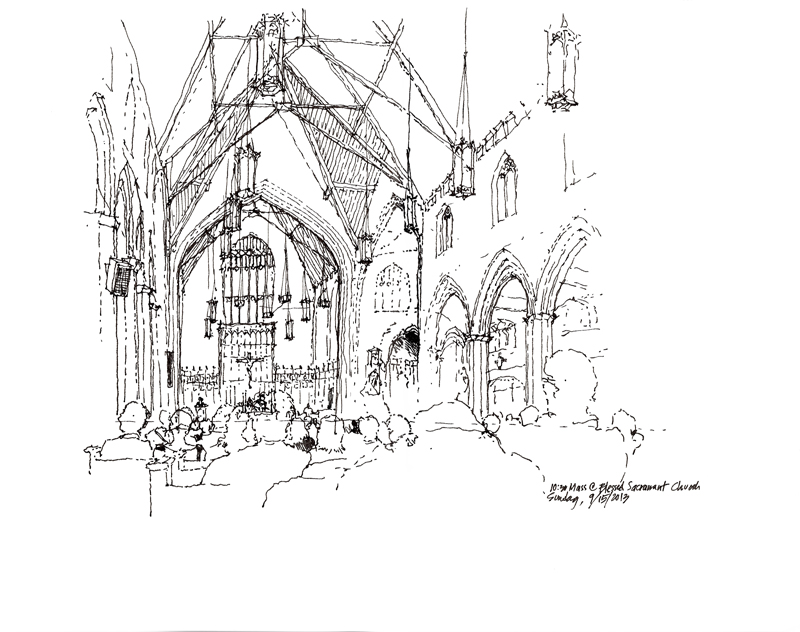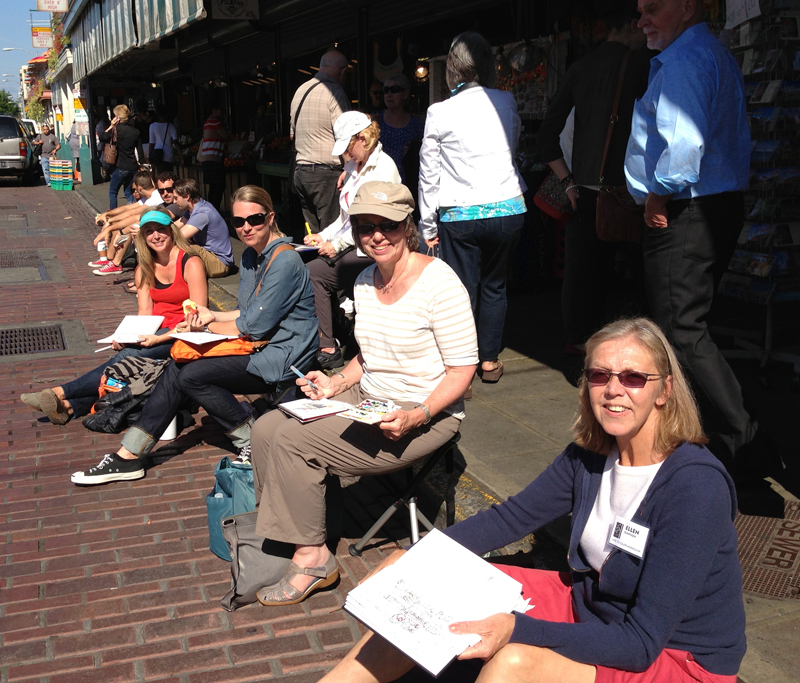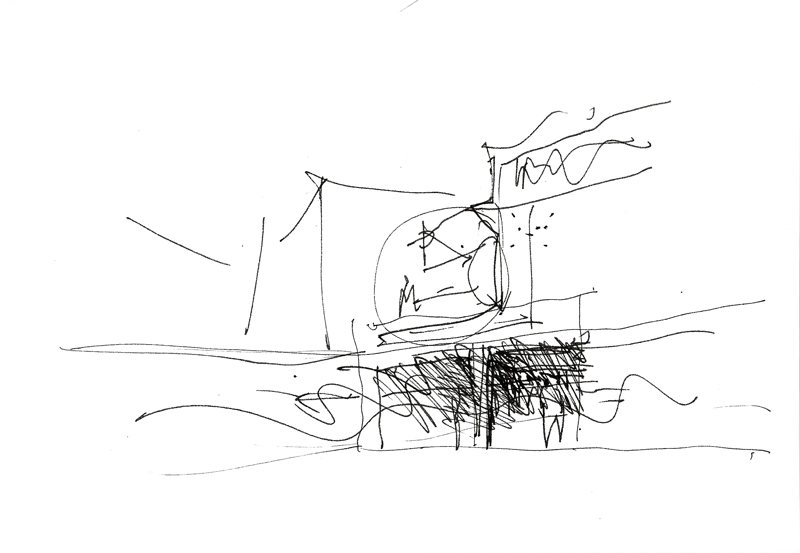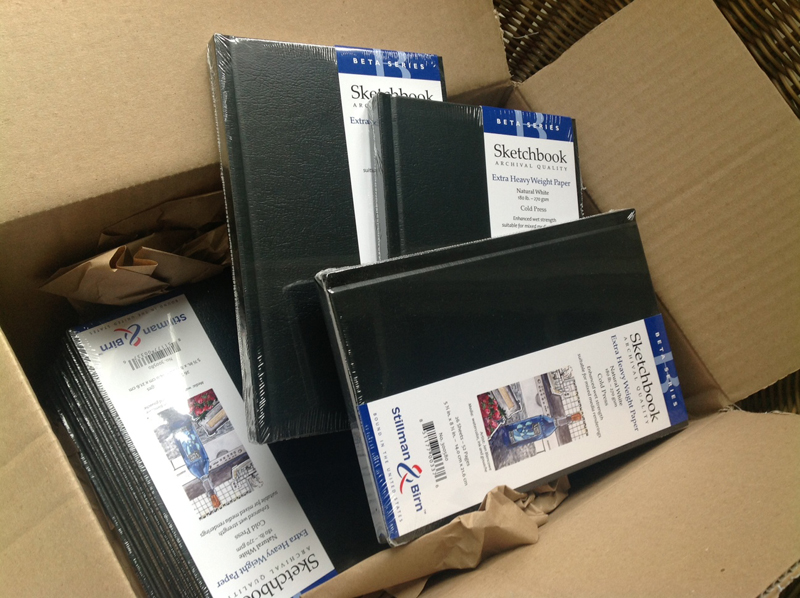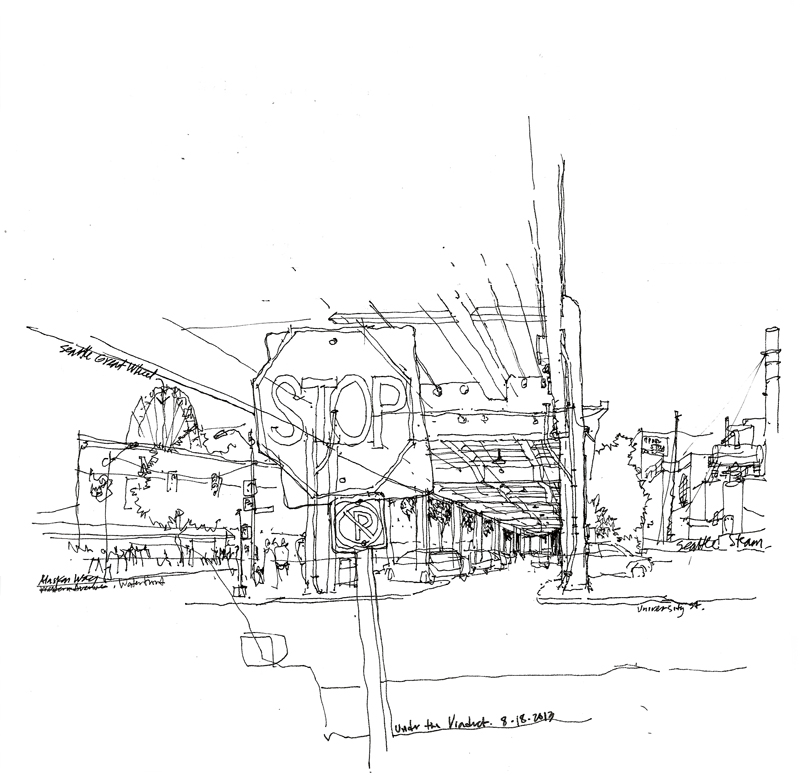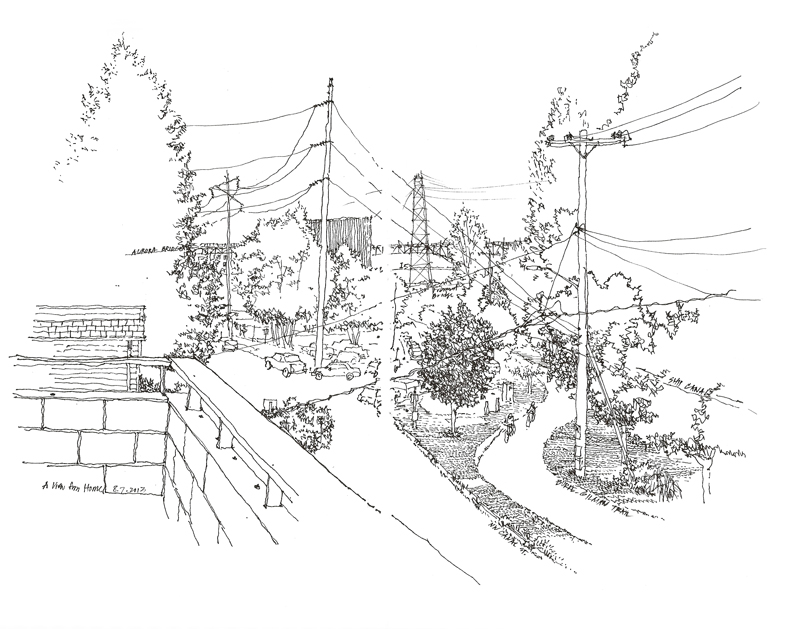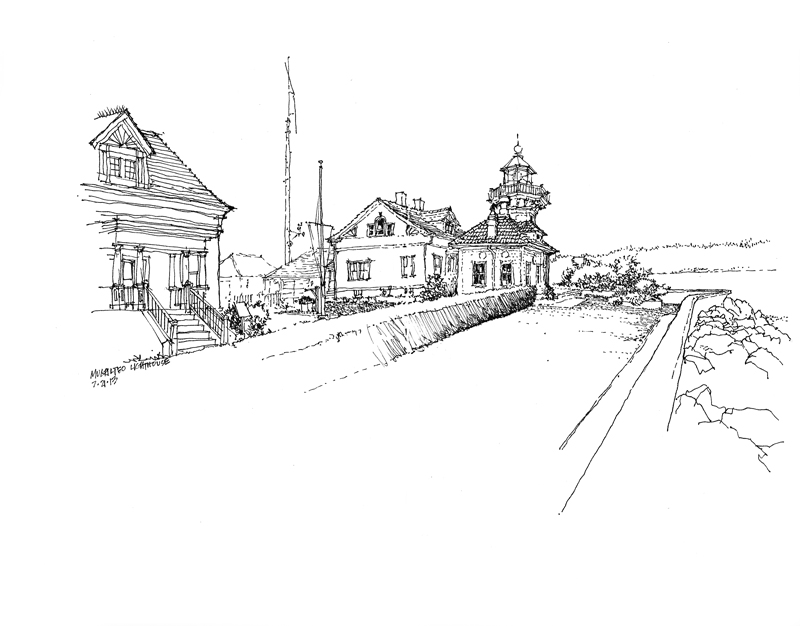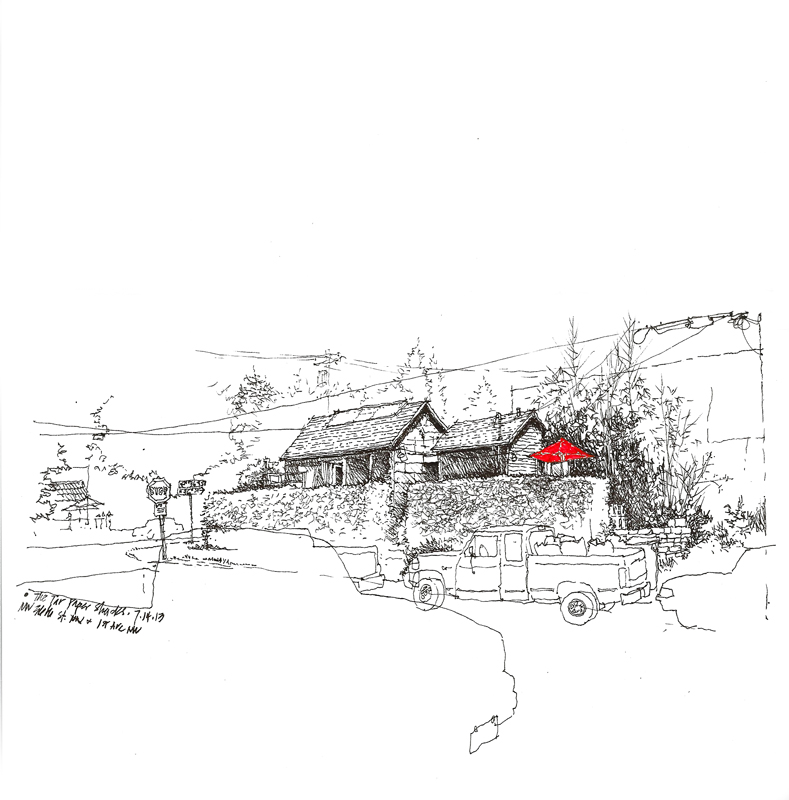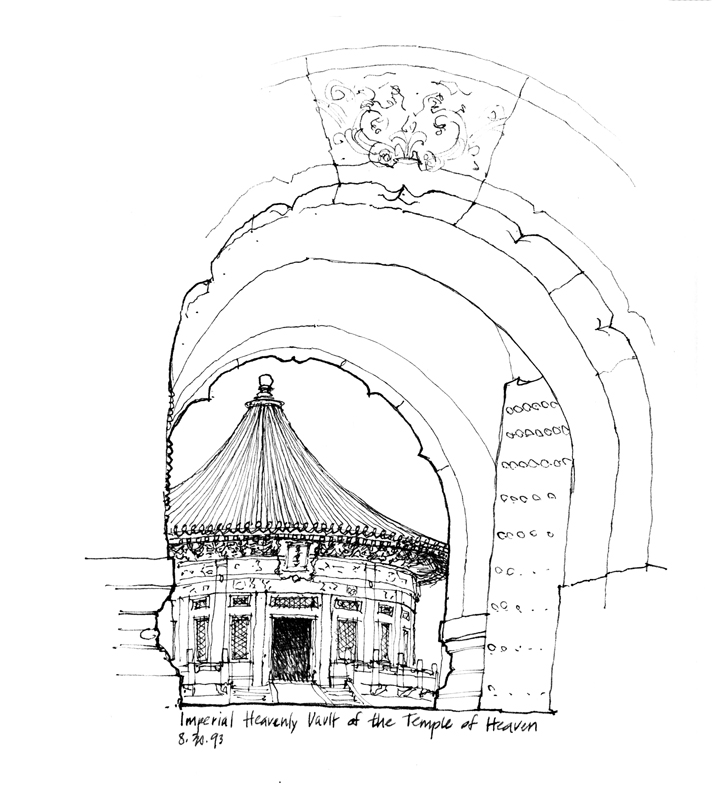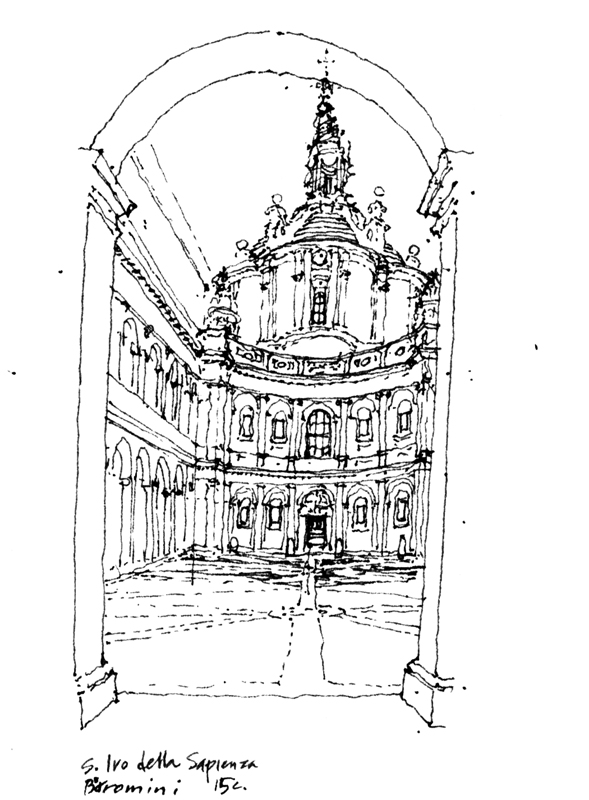I’ve been attending Blessed Sacrament Church, a Dominican parish in the University District, for over 30 years and I’ve marveled at this view every time I’m in the nave of the Neo-Gothic church. This past Sunday, I finally remembered to bring my sketchbook to Mass and to draw the imposing space from my usual position in one of the rear pews. Even though the design intention when the structure was built in 1925 was for the interior to be clad in wood and marble, the brick walls, concrete columns, and steel roof structure remain exposed to this day. Yet, the rawness of these elements do not detract in any way from the grand scale and proportions of the space.
This evening, I’m leaving for Rome, where I will be teaching for two months and visiting many more beautiful churches.

